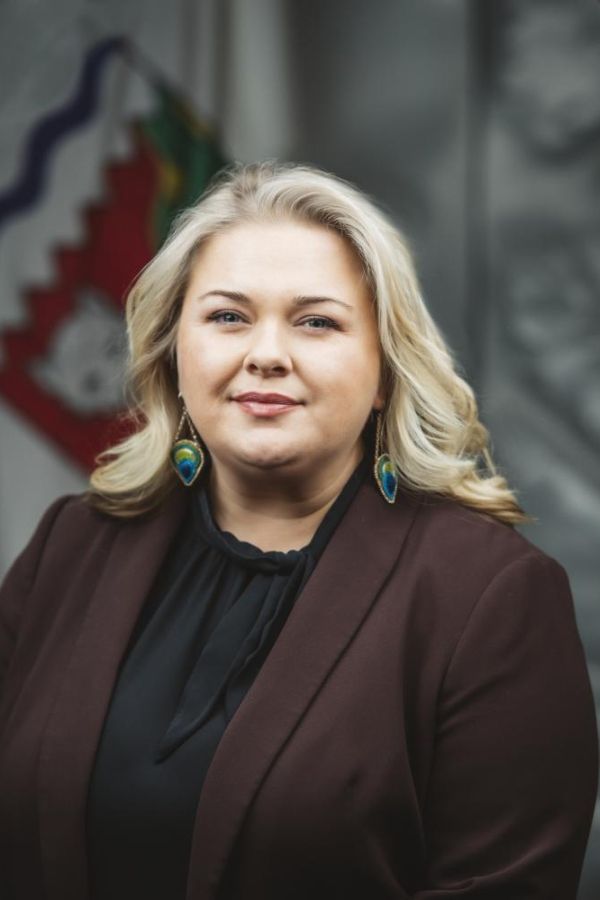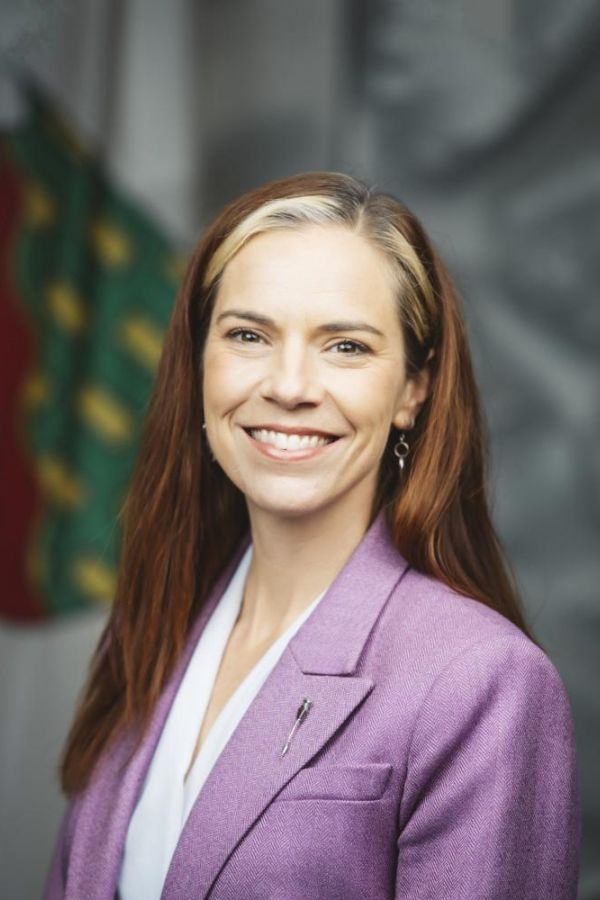Thank you, Madam Chair. I am not too sure how the evaluation would be identified in the main estimates. I'll ask Gary Schauerte to respond. Thank you.

Thank you, Minister. Mr. Schauerte.
Thank you, Madam Chair. I would expect that, in the contract budget in public safety, there is $308,000 identified for contracts. That's where we would complete that evaluation work. Thank you, Madam Chair.

Thank you, Mr. Schauerte. Member for Frame Lake.

Thanks, Madam Chair. I have a question for the Minister, if I could. I want to get a commitment out of the Minister that she is going to give the committee an opportunity to look at the evaluation framework and a draft of the report before it is finalized or Cabinet starts to make decisions about it so that Regular MLAs will have some input into the ongoing 911 program. Can the Minister make a commitment to share the terms of reference for the evaluation and then the evaluation report itself before Cabinet makes decisions around it? Thanks, Madam Chair.

Thank you, Member for Frame Lake. Minister of MACA.
Thank you, Madam Chair. Yes, I will make that commitment. Thank you.

Thank you. No further questions? Do any other Members have questions under public safety? Seeing no further questions, please turn to page 343. Municipal and Community Affairs, public safety, operations expenditure summary, 2021-2022 Main Estimates, $2,839,000. Does committee agree?
Agreed.

Thank you. We will now turn to regional operations, beginning on page 346, with information items to page 350. Member for Thebacha.

Thank you, Madam Chair. I was just listening to a lot of the comments that were made so far today with these estimates. A lot of consultants were used, a lot of reviews, a lot of reports. I just wonder how anything could get done if we are always waiting for a report, a consultant's deadline. A consultant who probably doesn't even understand any of us here in the North. How could anything really get done, Madam Chair, when common sense is not being used in making sure that deadlines are met? Just observing everything today was mind-boggling. My first question, Madam Chair, is: we spend a lot of money on consultants, reports, and lack of deadlines and not enough on common sense, making sure that we do have a decision, and meeting deadlines. I want to know how the department deals with that. Thank you, Madam Chair.

Thank you, Member for Thebacha. Minister of MACA.
Thank you, Madam Chair. I will have Mr. Gary Schauerte respond, as I would like to know, with the reports and evaluations that are done, if they are done in-house or by a consultant. Thank you, Madam Chair.

Thank you, Minister. Mr. Schauerte.
Thank you, Madam Chair. I will speak to the 911 evaluation, which is the most recent one that I just referenced. When we develop an evaluation framework, we do that in conjunction with the Department of Finance through their Management Board Secretariat and the evaluation folks who they have in their department. These are people who are specially trained in evaluation who could help guide the design and the development of the evaluation framework. They are also mindful that, when we do an evaluation, we want to do it properly within government.
One of the cautions that I have heard is when departments go and do evaluations on their own without working through a coordinated approach, we end up with 15, 20, 30 different types of evaluators out there evaluating things, and it just leads to more confusion. It's been a practice of the department to work through the evaluation unit within the Management Board Secretariat to complete our evaluations for a number of years now. In addition to designing the evaluation framework, the Department of Finance has already pre-reviewed evaluators who have the competency and the ability to evaluate for government purposes. There are pre-approved evaluators who the department can use to implement this work.
A good chunk of this work is done, again, to underline the consistency so that we are looking at programs the same across all of government. That's a big part of the reason why we are conducting the 911 evaluation the way that we are. We are also very early in the years of that program. We are one year in, and there are a lot of questions about how the program has been set up and how it has been resourced. I think that Members of this House and our government are interested in completing this evaluation so that we can inform answers to those questions. That's the larger reason why we are working within that system and why we are using exterior evaluators to help inform that question. Thank you, Madam Chair.

Thank you, Mr. Schauerte. Member for Thebacha.

That was a big explanation on something I never asked about, really. I wasn't worried about the other section. I was just making a general comment. Anyways, first of all, the travel on page 347, last year, actuals were $250,000, and now we are up to $566,000. Is that just to cushion the budget, or what is that? I just want to know exactly what that is. I want my answers to be very precise and short because we used up over half of my time just with that one question, please, Madam Chair.

Thank you, Member for Thebacha. Minister of MACA.
Thank you, Madam Chair. I will make sure that my responses are right to the point. I want to say that, the $566,000, there had to be a COVID impact of our department getting into the smaller communities. I will just have Ms. Eleanor Young elaborate quickly. Thank you.

Thank you, Minister. Deputy Minister Young.
Thank you, Madam Chair. The number you see there is 2019-2020. In part, it is COVID, but this is regional office travel into communities. It is determined primarily by engagement with communities and working with them to schedule visits in. Wherever possible, we also look for other sources of funding to pay. If we have a good year with federal money, then we pay for some of our capital planning travel, for example, out of federal infrastructure money instead of using our internal budget. Travel budgets do vary up and down depending on needs and staff, I think, is the fairest way to put that. Thank you, Madam Chair.

Thank you, Deputy Minister. I think the Member was looking for why it has doubled since 2019-2020. Member for Thebacha.

Community government funding remained the same all the way through. Is that done by per capita with 33 communities, Madam Chair? Sorry, $49,853,000 on page 348.

Minister of MACA.
Thank you, Madam Chair. I will have Mr. Gary Schauerte respond.

Thank you. Mr. Schauerte.
Thank you, Madam Chair. The operation and maintenance funding, the $49,853,000, is distributed according to the municipal funding formula. The municipal funding formula, and I will be brief, takes into consideration the total value of the municipal assets in the community and what it would cost to operate those on an annual basis. It really comes down to the assets on the ground in the community and the operational costs for those, which is all standardized right across all of the communities. Thank you, Madam Chair.

Thank you, Mr. Schauerte. Member for Thebacha.

For clarity, I asked a question. I wanted to know if it was, for all 33 communities, per capita.

Thank you. Minister.
Thank you, Madam Chair. Like Mr. Gary Schauerte had mentioned, this is based on infrastructure that we do have for the smaller communities. This is for all 33 communities, based on the infrastructure. Thank you, Madam Chair.

Thank you, Minister. Member for Thebacha.

Further to that question, then: if you are going per capita and according to communities and it's all 33 communities, including the capital, that doesn't leave very much for small communities and regions. I would like to know the breakdown of the regional centres, the capital, and then the small communities. Thank you, Madam Chair.

Thank you, Member. Minister.
Thank you, Madam Chair. Just for the Member to clarify, this is funding available to smaller communities, and you want to have a list of how much MACA provides each community annually? Thank you, Madam Chair.

Thank you. Member for Thebacha.

Thank you, Madam Chair. For clarity, there are 33 communities. That includes the capital. I want to know how much the capital gets, how much the regional centres get, the three regional centres or whatever, and the rest for the small communities, as totals. There is a big disparity within the regions and small communities. I would like to see the disparity in numbers.

Thank you, Member for Thebacha. Minister.
Thank you, Madam Chair. I will have to follow up with the Member. We do have additional funding that is provided besides what is offered territorially to all communities throughout the territory. Thank you, Madam Chair.

Thank you, Minister. Member for Thebacha.

Madam Chair, I think I am making myself very clear of what I want with that line. I am not talking about any other line. I'm just talking about that one line. It's, all the way through, the same. I made it very clear, and I would like to know how much it is, broken down. I am not asking for 50,000 different figures. I am asking for a figure because we go per capita in assets for the capital, what we give to the regional centres and what's left for the communities. That is all I'm asking. Thank you, Madam Chair.

Thank you, Member for Thebacha. Minister, do you have the breakdown here, or would you provide it?
I will get back to the Member. Thank you, Madam Chair.

Thank you. Any further questions?

I could ask one more question that has to do with the grant-in-lieu of taxes. That is for all of the taxable communities, or does that also include the grants-in-lieu with Stanton, or does Stanton come out of Health and Social Services, just a clarity? Thank you, Madam Chair.

Thank you, Member for Thebacha. Minister of MACA.
Thank you, Madam Chair. I will have Mr. Gary Schauerte to explain the grant-in-lieu. Thank you, Madam Chair.

Thank you, Minister. Mr. Schauerte.
Thank you, Madam Chair. The grant-in-lieu program provides grants to six municipal taxation authority communities in lieu of taxes. The six communities are the regional centres, including Yellowknife and the five other regional centres. The amount of money in here includes all government assets in those communities that are eligible for payment according to the policy. Within that envelope of funding includes an increase this year of $1.4 million, and those are for facilities located in Fort Smith, Hay River, and Inuvik, are the additional assets that came onboard this year, which we are paying for now. Thank you, Madam Chair.

Thank you, Mr. Schauerte. Member for Great Slave.






